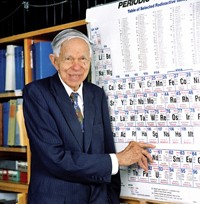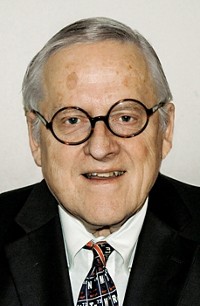Advertisement
Grab your lab coat. Let's get started
Welcome!
Welcome!
Create an account below to get 6 C&EN articles per month, receive newsletters and more - all free.
It seems this is your first time logging in online. Please enter the following information to continue.
As an ACS member you automatically get access to this site. All we need is few more details to create your reading experience.
Not you? Sign in with a different account.
Not you? Sign in with a different account.
ERROR 1
ERROR 1
ERROR 2
ERROR 2
ERROR 2
ERROR 2
ERROR 2
Password and Confirm password must match.
If you have an ACS member number, please enter it here so we can link this account to your membership. (optional)
ERROR 2
ACS values your privacy. By submitting your information, you are gaining access to C&EN and subscribing to our weekly newsletter. We use the information you provide to make your reading experience better, and we will never sell your data to third party members.
Physical Chemistry
Albert Ghiorso
by Susan J. Ainsworth
January 24, 2011
| A version of this story appeared in
Volume 89, Issue 4
Albert Ghiorso, 95, a retired Lawrence Berkeley National Laboratory (LBNL) nuclear researcher and codiscoverer of 12 chemical elements, died on Dec. 26, 2010, at his home in Berkeley, Calif., of heart failure while recovering from a minor fall.
A native of Vallejo, Calif., Ghiorso graduated with a B.S. in electrical engineering from the University of California, Berkeley, in 1937. Because of the Great Depression, no steady jobs were available. So Ghiorso worked for several small companies, gaining a reputation for his radio communication skills and his designs of radiation detection devices. His experience attracted the attention of UC Berkeley’s Glenn T. Seaborg, who persuaded a reluctant Ghiorso to move to Chicago to build radiation detection instrumentation for the Manhattan Project in 1941.
Beginning in 1942, Ghiorso learned nuclear science, designing new instrumentation that enabled Seaborg's research group to establish the chemistry of plutonium with trace quantities of the heavy metal. Work by Seaborg's group enabled the scale-up of plutonium processing by a factor of 109 in the wartime chemical separation plant at the Hanford Site, in Washington state. In 1944 and 1945, members of Seaborg’s group synthesized and identified two new elements, 95 (americium) and 96 (curium). These discoveries and the elucidation of their chemical behavior established the validity of Seaborg’s actinide hypothesis, which changed the layout of the periodic table by inserting the actinide elements as a homologous 5f series below the 4f lanthanide series.
After returning to UC Berkeley as part of Seaborg’s group in 1946, Ghiorso designed instrumentation that was critical to the discovery of elements 97 through 105: berkelium in 1949, californium in 1950, einsteinium and fermium in 1952, mendelevium in 1955, nobelium in 1958, lawrencium in 1961, rutherfordium in 1969, and dubnium in 1970. Discovery of element 106 was first reported by Ghiorso’s research group in 1974. After confirmation of the discovery of the element at LBNL in 1994, Ghiorso proposed the name seaborgium, which was approved by the International Union of Pure & Applied Chemistry in 1997.
Ghiorso was a fellow of the American Academy of Arts & Sciences and the American Physical Society. He received numerous accolades, including the ACS Award in Nuclear Chemistry in 1973 and the Lifetime Achievement Award of the Radiochemistry Society in 2004.
“Ghiorso will be remembered for his enthusiasm and optimism about producing still heavier elements throughout his long career and for his support of the arts and music,” says Darleane C. Hoffman, a professor of the graduate school in the chemistry department at UC Berkeley, who coauthored the book “The Transuranium People: The Inside Story” with Ghiorso and Seaborg.
Ghiorso’s wife, Wilma, whom he married in 1942, predeceased him. He is survived by his daughter, Kristine Pixton, and son, William.
This article originally was published with incorrect information in the third paragraph about the scale-up of plutonium processing. The work that enabled the scale-up was performed by Glenn T. Seaborg's group (not by Albert Ghiorso), and the scale-up increased processing by a factor of 109 (not 1018).






Join the conversation
Contact the reporter
Submit a Letter to the Editor for publication
Engage with us on Twitter